Reptiles and Amphibians
Media

Species Types
Scientific Name
Plethodon angusticlavius
Description
The Ozark zigzag salamander is small and slender, with a narrow, somewhat lobed back stripe that can be yellow, orange, or red. This woodland species lives in Missouri’s southwestern counties along the Arkansas border.
Media
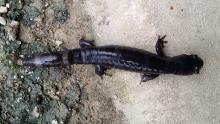
Species Types
Scientific Name
Ambystoma opacum
Description
The marbled salamander is a small, stout salamander with silvery, white, or gray saddle-shaped markings on its body from head to tail. They occur in the southeastern half of the state and are seldom encountered except during the autumn breeding season.
Media
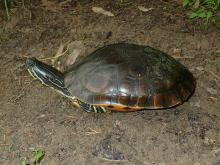
Species Types
Scientific Name
Deirochelys reticularia miaria
Description
The western chicken turtle is a small to medium-sized turtle with an oval shell and extremely long neck. It is endangered in Missouri, occurring only in the Mississippi Lowlands in the extreme southeastern part of the state.
Media

Species Types
Scientific Name
Kinosternon subrubrum hippocrepis
Description
Although well equipped for an aquatic existence, the Mississippi mud turtle spends as much time wandering about on land as it does in water. Look for it in the Mississippi Lowlands of Missouri’s Bootheel.
Media

Species Types
Scientific Name
Anaxyrus woodhousii woodhousii
Description
The Rocky Mountain toad has a number of irregular dark brown or black spots on the back and a white belly. It occurs in the Missouri River floodplain, mostly from the central to the far northwestern parts of the state.
Media
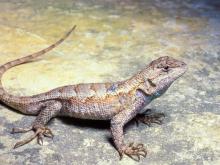
Species Types
Scientific Name
Sceloporus consobrinus
Description
The prairie lizard is a small, gray to brown, rough-scaled lizard common in open forests. It often lives around country homes and rock gardens and on stacks of firewood and split rail fences.
Media
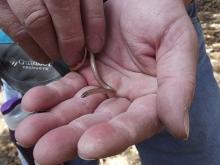
Species Types
Scientific Name
Tantilla gracilis
Description
The flat-headed snake is Missouri's smallest snake. It is found in the southern half of the state except the far southeastern corner.
Media
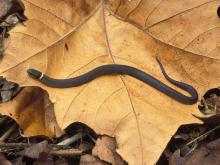
Species Types
Scientific Name
Diadophis punctatus arnyi
Description
Prairie ring-necked snakes are easily recognizable by their small size, uniform dark color on the back, bright yellow-orange belly, and distinct yellow ring around the neck. Secretive, but common nearly statewide.
Media
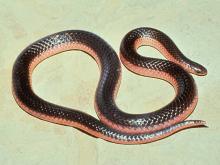
Species Types
Scientific Name
Carphophis vermis
Description
The western wormsnake is a small, two-toned snake that lives in wooded areas or rocky hillsides. It is usually purplish brown above and salmon pink on the belly and lower sides. It is found statewide, except for the Mississippi Lowlands.
Media

Species Types
Scientific Name
Plestiodon fasciatus
Description
The common five-lined skink is one of Missouri's most abundant skinks. Adults are olive or tan with lengthwise stripes. It is often called the blue-tailed skink for the coloration of juveniles. Occurs nearly statewide.
See Also
About Reptiles and Amphibians in Missouri
Missouri’s herptiles comprise 43 amphibians and 75 reptiles. Amphibians, including salamanders, toads, and frogs, are vertebrate animals that spend at least part of their life cycle in water. They usually have moist skin, lack scales or claws, and are ectothermal (cold-blooded), so they do not produce their own body heat the way birds and mammals do. Reptiles, including turtles, lizards, and snakes, are also vertebrates, and most are ectothermal, but unlike amphibians, reptiles have dry skin with scales, the ones with legs have claws, and they do not have to live part of their lives in water.





















